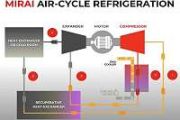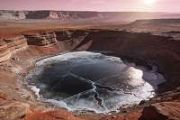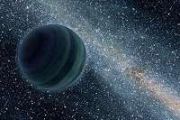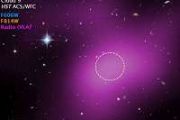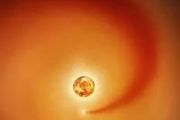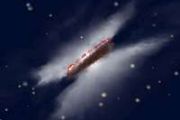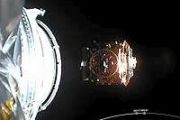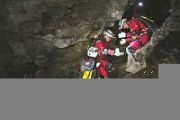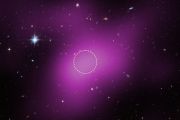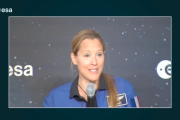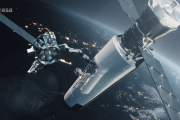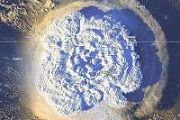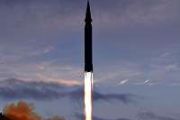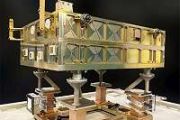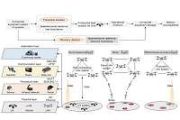
Copernical Team
Airbus US Space and Defense partners with Aerostar to advance stratospheric ISR technologies
 Airbus U.S. Space and Defense and Aerostar successfully completed a joint Internal Research and Development (IRAD) stratospheric test flight as part of their Cooperative Research and Development Agreement (CRADA). The test demonstrated the use of satellite backhaul technologies on high-altitude platforms for enhanced Intelligence, Surveillance, and Reconnaissance (ISR) capabilities.
The mi
Airbus U.S. Space and Defense and Aerostar successfully completed a joint Internal Research and Development (IRAD) stratospheric test flight as part of their Cooperative Research and Development Agreement (CRADA). The test demonstrated the use of satellite backhaul technologies on high-altitude platforms for enhanced Intelligence, Surveillance, and Reconnaissance (ISR) capabilities.
The mi Old Moon's young crust mystery explained
 Scientists have long debated the Moon's true age, with estimates varying by hundreds of millions of years. While some studies suggest the Moon formed 4.35 billion years ago, others place its origin at 4.51 billion years. Adding to the complexity, most lunar rock samples point to a younger age, but a handful of ancient zircon crystals appear much older. Researchers now propose that the Moon's cru
Scientists have long debated the Moon's true age, with estimates varying by hundreds of millions of years. While some studies suggest the Moon formed 4.35 billion years ago, others place its origin at 4.51 billion years. Adding to the complexity, most lunar rock samples point to a younger age, but a handful of ancient zircon crystals appear much older. Researchers now propose that the Moon's cru NASA payload to study heat flow beneath the Moon's surface
 Earth's closest celestial neighbor, the Moon, has seen only 5% of its surface directly explored by humans. Decades of study, including NASA's Apollo-era missions and the 2011-2012 GRAIL (Gravity Recovery and Interior Laboratory) mission, culminated in the discovery in 2023 of a liquid outer core surrounding a solid inner core within the Moon.
As NASA's Artemis program intensifies preparati
Earth's closest celestial neighbor, the Moon, has seen only 5% of its surface directly explored by humans. Decades of study, including NASA's Apollo-era missions and the 2011-2012 GRAIL (Gravity Recovery and Interior Laboratory) mission, culminated in the discovery in 2023 of a liquid outer core surrounding a solid inner core within the Moon.
As NASA's Artemis program intensifies preparati Webb offers best glimpse ever into the icy planetesimals of the early solar system
 New studies led by researchers at the University of Central Florida offer for the first time a clearer picture of how the outer solar system formed and evolved based on analyses of trans-Neptunian objects (TNOs) and centaurs.
The findings, published in Nature Astronomy, reveal the distribution of ices in the early solar system and how TNOs evolve when they travel inward into the region of
New studies led by researchers at the University of Central Florida offer for the first time a clearer picture of how the outer solar system formed and evolved based on analyses of trans-Neptunian objects (TNOs) and centaurs.
The findings, published in Nature Astronomy, reveal the distribution of ices in the early solar system and how TNOs evolve when they travel inward into the region of University of Houston scientists solving meteorological mysteries on Mars
 A groundbreaking achievement by scientists at the University of Houston is changing our understanding of climate and weather on Mars and providing critical insights into Earth's atmospheric processes as well.
The study, led by Larry Guan, a graduate student in the Department of Physics at UH's College of Natural Sciences and Mathematics, under the guidance of his advisors, Professor Liming
A groundbreaking achievement by scientists at the University of Houston is changing our understanding of climate and weather on Mars and providing critical insights into Earth's atmospheric processes as well.
The study, led by Larry Guan, a graduate student in the Department of Physics at UH's College of Natural Sciences and Mathematics, under the guidance of his advisors, Professor Liming Evidence exists for hidden water reservoirs and rare magmas on ancient Mars
 A new study explores how variations in Mars' crustal thickness during its ancient history may have influenced the planet's magmatic evolution and hydrological systems. The research, published in Earth and Planetary Science Letters, suggests that the thick crust of Mars' southern highlands formed billions of years ago generated granitic magmas and sustained vast underground aquifers, challenging
A new study explores how variations in Mars' crustal thickness during its ancient history may have influenced the planet's magmatic evolution and hydrological systems. The research, published in Earth and Planetary Science Letters, suggests that the thick crust of Mars' southern highlands formed billions of years ago generated granitic magmas and sustained vast underground aquifers, challenging Frosty landscape captured at Mars' South Pole
 The latest image from ESA's Mars Express offers a stunning glimpse of Mars' south pole, resembling a winter wonderland with its icy hilltops and snow-like layers. However, this scenic view belies the reality of summer on Mars, where the Sun's heat drives the retreat of seasonal ice formations.
A closer examination of the left side of the image reveals dark areas where the carbon dioxide ic
The latest image from ESA's Mars Express offers a stunning glimpse of Mars' south pole, resembling a winter wonderland with its icy hilltops and snow-like layers. However, this scenic view belies the reality of summer on Mars, where the Sun's heat drives the retreat of seasonal ice formations.
A closer examination of the left side of the image reveals dark areas where the carbon dioxide ic Venus Aerospace ignites VDR2 engine in major milestone
 Venus Aerospace, a prominent innovator in hypersonic technology, has successfully ignited its VDR2 engine, achieving a critical milestone in its development of advanced high-speed propulsion. The VDR2 engine offers a unified solution for speeds ranging from Mach 0 to Mach 6 and represents the first successful test of a Rocket-Based Combined Cycle (RBCC) engine.
The VDR2 engine, revealed in
Venus Aerospace, a prominent innovator in hypersonic technology, has successfully ignited its VDR2 engine, achieving a critical milestone in its development of advanced high-speed propulsion. The VDR2 engine offers a unified solution for speeds ranging from Mach 0 to Mach 6 and represents the first successful test of a Rocket-Based Combined Cycle (RBCC) engine.
The VDR2 engine, revealed in NASA and Axiom Space accelerate plans for free-flying space station
 NASA and Axiom Space have adjusted the assembly sequence for Axiom's commercial space station, aiming to expedite its readiness as a free-flying platform and reduce reliance on the International Space Station (ISS) during its assembly.
Under a contract awarded in January 2020, Axiom Space began developing a habitable commercial module to attach to the ISS, with the eventual goal of establi
NASA and Axiom Space have adjusted the assembly sequence for Axiom's commercial space station, aiming to expedite its readiness as a free-flying platform and reduce reliance on the International Space Station (ISS) during its assembly.
Under a contract awarded in January 2020, Axiom Space began developing a habitable commercial module to attach to the ISS, with the eventual goal of establi NASA names agency veteran as deputy manager of deep space program
 NASA has named a space agency veteran as deputy manager of its Gateway program, the administration announced Thursday. That program is central to the Artemis mission to return to the moon and for charting a path for the first human missions to Mars.
Carlos Garcia-Galan, 50, brings 27 years of human spaceflight experience to the job, the agency said Thursday. A native of Malaga, Spain, h
NASA has named a space agency veteran as deputy manager of its Gateway program, the administration announced Thursday. That program is central to the Artemis mission to return to the moon and for charting a path for the first human missions to Mars.
Carlos Garcia-Galan, 50, brings 27 years of human spaceflight experience to the job, the agency said Thursday. A native of Malaga, Spain, h 








